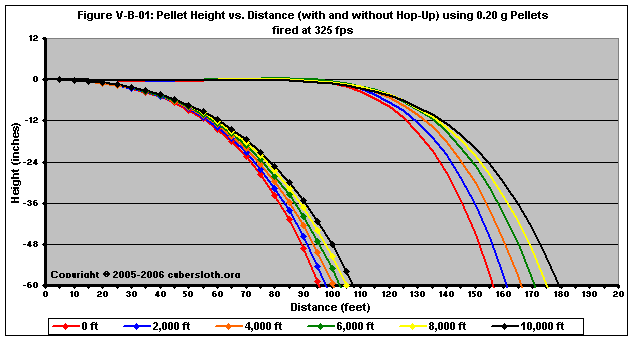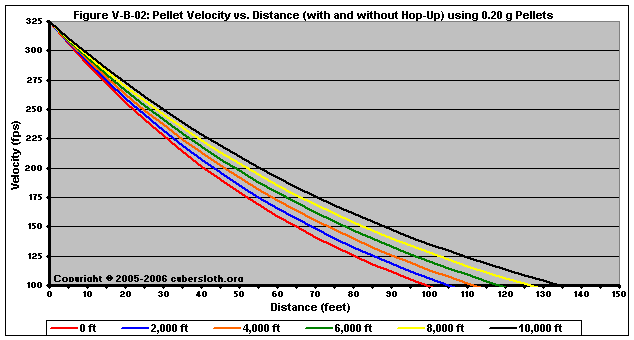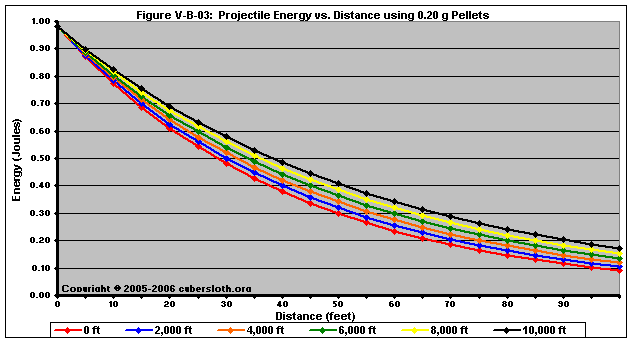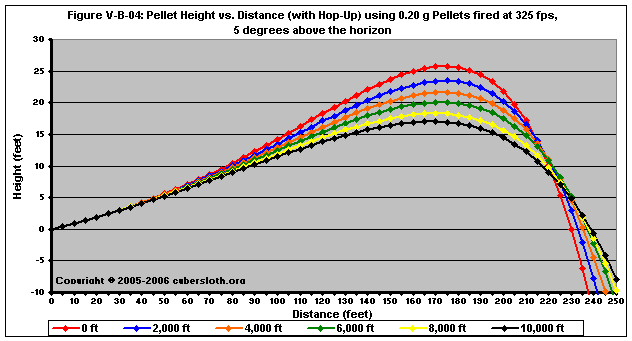Section V-B: Effect of Altitude on Trajectory
Typically, lower air density -- as is the case in higher altitudes or warmer temperature -- benefits ballistic trajectories. However, this is not straightforward with airsoft due to the effects of hop-up. It is easy to understand how the lower air density allows for a longer trajectory for non-rotating BB's. Initially, I estimated that lower density air would benefit non-spinning BB's (as was fairly obvious), as I had assumed that less air would translate to less lift down range. While it is true that there is less air for a spinning BB to use for generating lift, I neglected to take into account other factors that affect trajectory down range.
In the case of hop-up, lower air density means that the BB cannot generate as much Magnus Lift. Think of it this way: Magnus Lift comes about due to a momentum shift in the boundary layer (the air immediately surrounding the BB). As the air is less dense, there is less mass for the momentum shift. While this serves as a detriment to the trajectory of spinning BB's at higher altitudes, lower air density also reduces the rate at which spin decay occurs for the rotating BB. This effect means that the BB will be spinning a significantly higher speed down range. The higher rate of spin down range serves to negate the effects of the lack of air mass needed for Magnus Lift. In other words, in less-dense air the BB is able to achieve more lift even though there is less medium to work with.
In Figure V-B-01, notice that the higher altitude BB's outrange those at lower altitudes, both with and without hop-up applied.

The effects are not that extreme. Going from sea level to, say, Denver, Colorado (5,300 ft msl), will only grant you an extra 5-10 feet or so of effective range, how much dependent upon muzzle velocity. At the same time, MED's would need to be increased 5-10 feet in Denver for high-powered rifles, somewhat offsetting the increased range. .
Figures V-B-02 and V-B-03 show how higher altitude shots maintain their velocity and energy better due to the reduced drag.


For shots fired level with the horizon, the lessened effects of hop-up at higher altitudes translates to a shorter trajectory. For shots fired at angles above the horizon, however, the diminished drag that the BB experiences allows it to have an ultimately longer trajectory, as depicted in Figure V-B-04.
